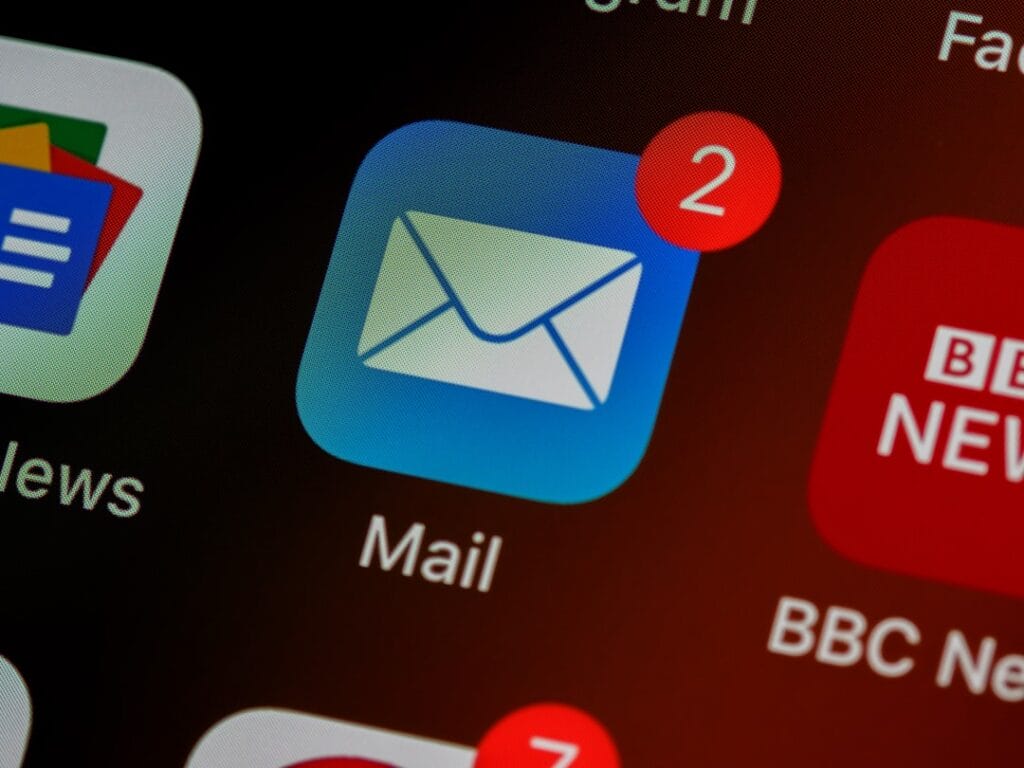B2B lead generation is an essential process for businesses looking to grow their professional customer base. This approach consists of identifying and attracting qualified prospects likely to be interested in the products or services offered. To optimize lead generation , several effective strategies can be implemented.
First of all, creating quality content is essential. By producing informative articles, white papers or webinars, businesses can demonstrate their expertise and attract the attention of potential prospects. Professional social networks, such as LinkedIn, also play a crucial role in B2B lead generation
They allow you to precisely target decision-makers and build relationships with them. Email marketing remains an effective technique, provided you personalize messages and segment mailing lists. Marketing automation, using specialized tools, allows you to optimize these campaigns and track the prospect's journey.
Professional events, whether physical or virtual, offer opportunities for networking and generating qualified leads. Finally, search engine optimization (SEO) and content marketing help improve your company's online visibility and attract prospects through search engines. It's important to note that B2B lead generation is an ongoing process that requires a multi-channel approach and regular analysis of results to adjust strategies accordingly.
Summary
- B2B lead generation requires a targeted and personalized approach to reaching potential businesses.
- Lead generation involves identifying and attracting prospects interested in a company's products or services.
- Winning strategies for generating qualified leads include content marketing, SEO, social media, email marketing, and influencer marketing.
- The generation of leads is crucial in the sales process because it feeds the sales pipeline with qualified prospects .
- To generate leads effectively, it is essential to use tools such as CRMs, contact forms, chatbots, and techniques such as lead scoring and marketing automation.
Generating leads: definition and challenges
Identify and attract potential prospects
Lead generation involves identifying and attracting potential prospects who are likely to become customers for a business. This is a major issue for any organization, because without qualified prospects, it is difficult to develop your business and increase your turnover. Lead generation therefore helps nourish the company's commercial pipeline and guarantees a constant flow of new potential customers.
Strategies to attract the attention of prospects
This involves implementing effective strategies to attract the attention of prospects, encourage them to be interested in the company's offering, and convert them into customers. The issues related to lead generation are multiple. First of all, it is an essential means of ensuring the growth and sustainability of the company.
The Benefits of Lead Generation
By attracting new qualified prospects, the company can increase its business opportunities and expand its customer base. Additionally, lead generation helps fuel the sales process by providing salespeople with a constant stream of prospects to contact and convert into customers. This helps improve business efficiency and increase conversion rate. Additionally, lead generation also helps improve company awareness and visibility by attracting the attention of new audiences and strengthening its market presence. Finally, it helps to optimize the return on investment (ROI) of marketing actions by effectively targeting the prospects most likely to convert into customers.
5 winning strategies for generating qualified leads

1. Create relevant and quality content: Creating informative and useful content for your target audience is an effective way to grab the attention of potential prospects and get them interested in your business and your offerings. By producing relevant content, you can establish your expertise in your field and pique the interest of prospects.
2. Use social media: Social media is a powerful tool for lead generation. By using social platforms relevant to your industry, you can connect with qualified prospects, share relevant content, and interact with your audience to pique their interest.
3. Implement a personalized emailing strategy: Personalized emailing is an effective way to connect with qualified prospects and encourage them to be interested in your products or services. By sending targeted, personalized emails, you can pique their interest and encourage them to start a conversation with your business.
4. Use marketing automation tools: Using marketing automation tools can help you optimize your lead generation efforts by automating certain repetitive tasks and effectively tracking your prospects throughout the process purchase. 5.
Collaborating with partners or influencers: collaboration with partners or influencers can allow you to reach new audiences and generate qualified leads thanks to their already established credibility and audience.
The importance of lead generation in the sales process
| Metric | Value |
|---|---|
| Lead-to-customer conversion rate | 25% |
| Number of leads generated per month | 500 |
| Acquisition cost per lead | 50€ |
| Average time to convert a lead into a customer | 30 days |
Lead generation plays a crucial role in a company's sales process. Indeed, without qualified prospects, it is difficult for a company to develop its activity and increase its turnover. Lead generation therefore helps fuel the company's sales pipeline by providing salespeople with a constant flow of prospects to contact and convert into customers.
This helps improve business efficiency and increase conversion rate. Additionally, lead generation also helps optimize the sales process by effectively targeting prospects who are most likely to convert into customers. By identifying qualified prospects, the company can focus its efforts on the most promising business opportunities and maximize its chances of closing sales.
This helps improve sales productivity and optimize the return on investment (ROI) of marketing actions. Finally, lead generation also helps improve customer relations by identifying the needs and interests of prospects from the start of the purchasing process. By better understanding prospects' expectations, the company can personalize its commercial approach and offer solutions adapted to their specific needs.
This helps to boost customer satisfaction and build loyalty among existing customers.
How to generate leads effectively: tools and techniques to use
To generate leads effectively, it is essential to use the right tools and techniques. Among the essential tools for lead generation, we find marketing automation software, social platforms, emailing tools, CRM (Customer Relationship Management) solutions, and performance analysis and monitoring tools. . Marketing automation software is particularly useful for optimizing lead generation efforts by automating certain repetitive tasks such as sending emails, posting content on social media, or following up with prospects throughout the process. purchasing process.
These tools also make it possible to effectively segment your database in order to send personalized and targeted messages. Social platforms are also a powerful tool for the generation of leads. Using social networks relevant to your sector of activity, you can get in touch with skilled prospects, share relevant content, interact with your audience, and arouse their interest in your offers.
Emailing tools are essential for implementing a personalized emailing strategy to connect with qualified prospects and encourage them to be interested in your products or services. These tools also make it possible to automate the sending of targeted and personalized emails to effectively nurture prospects throughout the purchasing process. CRM (Customer Relationship Management) solutions are essential to effectively manage your customer/prospect database, monitor the evolution of the sales cycle, personalize your commercial approach, and analyze the performance of your marketing actions.
Finally, analysis and performance monitoring tools are essential to measure the effectiveness of your lead generation strategy, identify the most effective levers, optimize your marketing actions, and maximize your return on investment (ROI).
Generating leads: meaning and impact on business growth

Lead generation has a major significance in the development and growth of a business. Indeed, it helps feed the sales pipeline by providing salespeople with a constant flow of qualified prospects to contact and convert into potential customers. This helps to increase business opportunities, expand customer base, and increase turnover.
Lead generation also has a significant impact on company awareness and visibility. By attracting the attention of new audiences through targeted marketing actions, it strengthens market presence, improves brand perception, and promotes its recognition among consumers. In addition, lead generation helps optimize the return on investment (ROI) of marketing actions by effectively targeting the prospects most likely to convert into customers.
By precisely identifying potential targets, the company can focus its efforts on the most promising business opportunities and maximize its chances of closing sales. Finally, lead generation also promotes continuous improvement of sales processes by identifying prospects' needs and interests early in the buying process. By better understanding prospects' expectations, the company can personalize its commercial approach, offer solutions adapted to their specific needs, strengthen customer satisfaction, build loyalty among existing customers, and promote positive word of mouth.
Measure the effectiveness of your lead generation strategy
To measure the effectiveness of your lead generation strategy, it is essential to use relevant indicators that allow you to precisely evaluate your performance. Some of the key metrics to consider include visitor-to-lead conversion rate, lead-to-customer conversion rate, cost per lead (CPL), return on investment (ROI), total number of leads generated, the opening rate and click-through rate of emails sent, the total number of interactions on social networks, or even the engagement rate on the website. By measuring these indicators regularly, it is possible to evaluate the overall effectiveness of your lead generation strategy, identify the most effective levers, optimize your marketing actions, and maximize your return on investment (ROI).
It also allows you to continually improve your strategy by identifying what is working well and what needs to be adjusted to achieve your business goals. In addition, it is important to use powerful analysis tools that allow you to efficiently collect and analyze all this data in order to draw concrete lessons to improve your marketing strategy. These tools can also help accurately track the customer journey from their first interaction with the brand to their conversion into a customer in order to improve the customer experience throughout the purchasing process.
Finally, it is recommended to establish a complete dashboard which brings together all these key indicators in order to have a global vision and
To generate lead effectively, it is essential to understand the lead scoring in marketing automation. This Magileads article explains in detail how the lead scoring can be used for B2B and B2C, and how it can help identify the most qualified prospects. Using this method, companies can optimize their lead generation efforts and improve their conversion rate . To find out more about Lead Scring, see the full article here .
FAQs
What is lead generation?
Lead generation is the process of creating and capturing information about potential customers who are interested in a company's products or services.
What are the benefits of lead generation?
Lead generation allows businesses to target specific potential customers, increase their customer database, improve their conversion rate, and boost sales.
What are the different ways to generate leads?
Businesses can generate leads through digital marketing campaigns, trade shows, webinars, contact forms on their website, targeted advertising, partnerships with other businesses, and more.
How to measure the effectiveness of lead generation?
Lead generation effectiveness can be measured through metrics like conversion rate, cost per lead, ROI of lead generation campaigns, etc.
What are the best practices for lead generation?
Best practices for lead generation include clearly defining your target audience, personalizing messages, implementing lead tracking processes, optimizing contact forms, and more.





